-
Content Count
531 -
Joined
-
Last visited
Content Type
Profiles
Forums
Calendar
Posts posted by Superheat
-
-
Gents,
Not too long after the release of the Kitty Hawk F-101A-C kit I had occasion to visit the Air Force Museum and photographed their RF-101C and F-101B intakes. Here is a composite profile and oblique comparison of the left intakes of those two aircraft for anyone who might still be in the dark about the differences between them, They are substantial and quite noticeable.
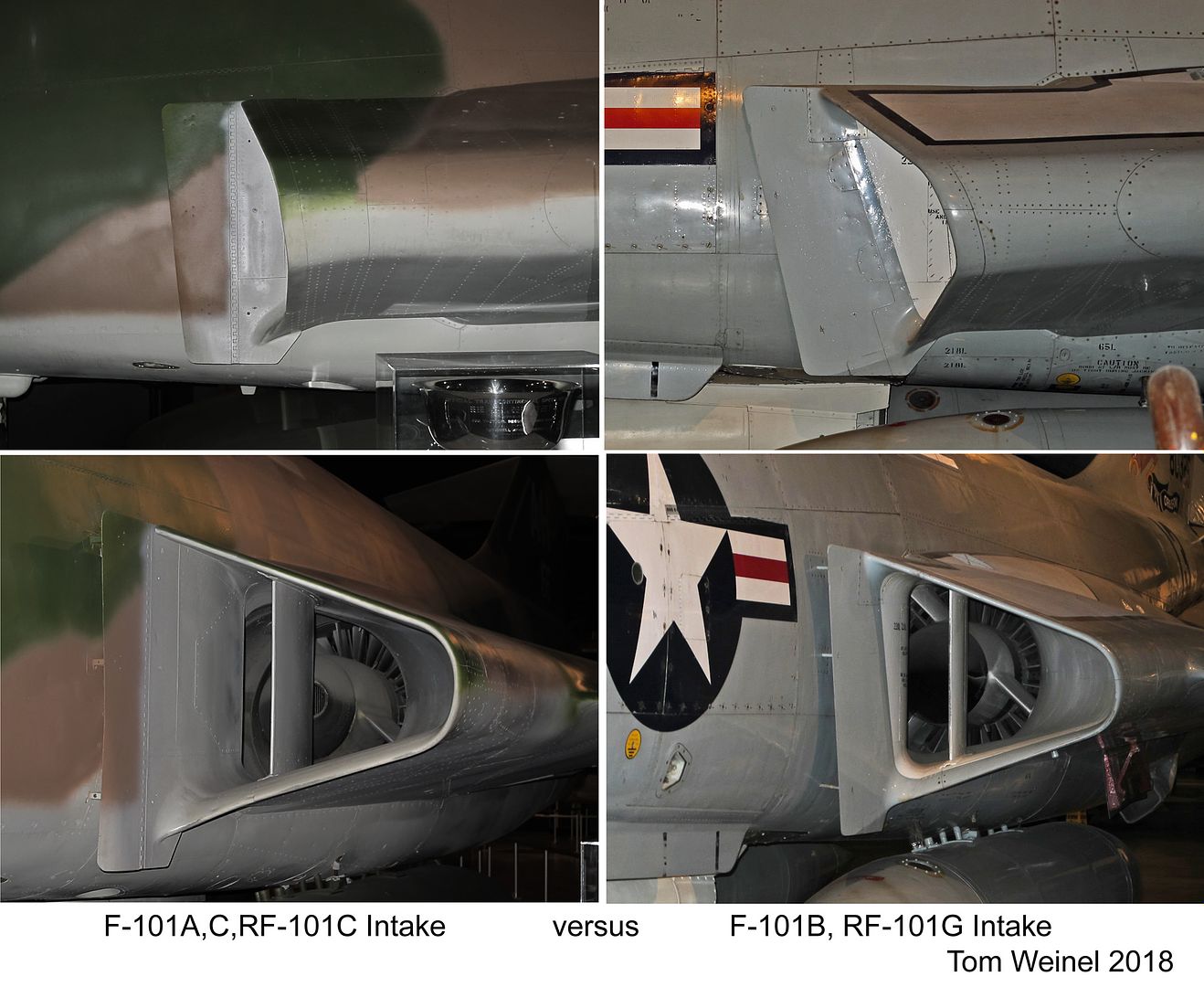
To me, putting F-101B intakes on an A-C variant, is akin to removing the gun fairing from an F-4E kit, replacing it with the C_D chin dome and calling that kit an F-4C or D.
HTH,
Tom
-
-
Actually, they are not always DGG, they can be LGG or black or not there at all. And all those variations might exist in the same squadron. They were generally locally applied, so it was up to the individual squadron what color they were. Differences would occur because during turnarounds between cruises, aircraft transferred out and others came in, often from other squadrons, and if the walkways were already there, they generally remained, regardless of color. It is a classic case of check for photos of the aircraft you want to do, or aircraft from that squadron in the same timeframe. Vitaly, in the example you inquired about, a VA-83 CAG aircraft, the walkway is black, so if that is the aircraft you wish to do, go with black , which was the most common color of the walkways in VA-83. Whatever color you go with, they are non-skid, so they have a rough texture to them, definitel NOT gloss.
Cheers,
Tom
-
30 minutes ago, Solo said:
Yes, this is just a rumour, only rumour.
If you can edit the topic title, put a ? at the end. That would make everything clear.
-
-
Gents,
HobbyEasy now shows a release date of March 10th, and seems to still be taking pre-orders:
http://www.hobbyeasy.com/en/data/tare0bal4idjzfrztyrj.html
Cheers,
Tom
-
Whew!!!!! Thanks for checking in, Rex. Glad to know it is just computer woes andthat you are OK. I look forward to seeing you back on line, my friend.
Cheers,
Tom
-
Has anyone heard from or about Rex? He has not been on these forums since November 3rd, and I have not seen him elsewhere either. I have tried PM'ing him, but no response. There have been a lot of topics to which I would have expected him to respond and, obviously, he has not. I miss his input, and I am getting worried. Hope someone knows something.
Cheers,
Tom
-
Uwe,
The Crusaders are VF-33 F8U-1E's (F-8B after 1962), which dates the photo to the Aug 1961-Feb 1962 cruise, the only one 33 made in that version. As Paul pointed out, their next cruise was on the Big E in the F-8E. The -1E/B had the same radar (and cockpit) as the -2/C, but no ventral fins and no A/B cooling scoops. Can't see the wheels, but most likely all early types, ie spoked nose wheel and ribbed mains, but possibly some had the familiar late disc mains. Cool photo, where did you find it?
Cheers,
Tom
PS: I should note that the Cutting Edge C conversion isn't very accurate. The Muroc Models version, though not perfect, is much better.
-
8 hours ago, spejic said:
200mm is a scale used for military figures - I think it's about 1/9.
If that's the case, it's a massive kit.
In figure modelling, XXmm is (or is supposed to be) a standard, not a scale. That standard sets the height of a standing figure from the soles of the feet to the eye-line, thus very intentionally leaving out any headgear. So a 200mm figure should be 200mm from the soles of the feet to the to its eyes, and that should be the case whether the figure represents David or Goliath. The standard has been bent over the years, largely I think, because modern figure makers (and modellers) are largely ignorant of the standard, so one often sees reference to "XXmm scale". In this case, I think Trumpeter is using 200mm as a standard length, not a scale, and that each kit will be scaled to have a length of 200mm (or so). It is rather akin to the historic "box scale" used by Revell, where kits were scaled so that they would fit in one of their standard boxes. If it is a standard length, I doubt it will find wide acceptance. A Japanese company, NIchimo, I think, tried it with 30 cm ship models, and it didn't work for them.
Another possibility is that they mean 200th scale (since those kits appear on the same box as some 144th kits). Time will tell, I guess, though with Trumpeter that could be a LONG time!
Cheers,
Tom
-
On 11/7/2017 at 11:51 PM, Vidar_710 said:
I'm gonna have to get back to you on that one. I'm gonna come up with some mixes and make some swatches. I'll go out and do a pre-flight instead of letting my First Officer do it so I can see how close I get.
My guess is to start with a Gloss White base with various amounts of Silver added in each mix. The color is actually a tad Pearlescent or Candied. But you have to be really close to see it.
Tracy
Hi Tracy,
Probably a day late and a dollar (or ten) short, but what about adding the silver (and maybe a bit of white) to clear coats and layer that up until you get the effect you want. Or reverse it: a silver base and add white to clear for the overcoats, like the "candy" coats on cars. Or go look at nail polishes - can't imagine there isn't a pearlescent white nail polish that would fill the bill. Look forward to seeing your result, whichever way you go.
Cheers,
Tom
-
1 hour ago, Tailspin Turtle said:
Thanks - now please have that guy look into why the "go back" function is almost useless because a page refreshes itself 10 times a minute so you can't get to the previous one..
+1
+1
+1
+1
+1
+1
+1
+1
+1
-
F-8D
in Jet Modeling
Gents,
First off, the F-8D was an E with a small nose, or perhaps better stated the other way: the E is a D with the big nose to accommodate the larger APQ-94 radar. The only other differences between the two is that the E had wing stations, the D did not, and the 150xxx E's were built with the hump, which the D and 149xxx E's did not have. The D cockpit is identical to the E with two exceptions: the radar scope for the APQ-83 was similar to, but not the same, as the one in the C; and the station selector on the weapons sub-panel on the D did not have wing stations(not something to worry about in 48th scale) . I would post a photo of the APQ-83 radar scope, but PB is not uploading for me at the moment
So to get from an E to a D, the biggest part of the conversion is the nose, and as others have pointed out, the Muroc C Cconversion, though not perfect, will get that for you, and it has a nice C instrument panel, which is close enough to a D in 48th. Unfortunately, it does not have a good replacement F5 seat, so you are stuck wit the kit seat, but it is a decent replica of the F5, though very basic. There is also, or was, anyway, the Cutting Edge C conversion, but I do not recommend it, as it does not accurately depict the early nose.
HTH,
Tom
-
Hi Stefan,
As built, all Crusaders had green wing bays, but Interior Green, aka Chromate Green, not Zinc Chromate which is a very light yellow-green. Since there were numerous fluid lines - hydraulic, oil and fuel - running through the bay, and since they all looked the same on the green paint, the green bays were over-painted with white, which showed the red hydraulic fluid very well. This over-paint with white was probably done during PAR (repaint) cycles, as there still some green bays around when I got to the airplane in 1967.
The rebuild versions - H, J, K, L, and RF-8G - were stripped to bare metal and their wing bays were solid white (the over-painted ones were thin and patchy in spots).
For the options in the kit, all F-8E's, it could be either, it is impossible to say for sure without a photo of the particular aircraft that shows enough of the wing bay to see the colo, but I suspect that all the kit marking options would be white. What you might consider doing is paint the bay (and the underside of the wing) with the interior green, then give it an overspray with white, not bothering to get complete coverage so that the green shows through in spots. Here is a photo of a French Crusader's wing bay which was over-painted white. The underlying green is visible in spots and note the forward bulkhead.
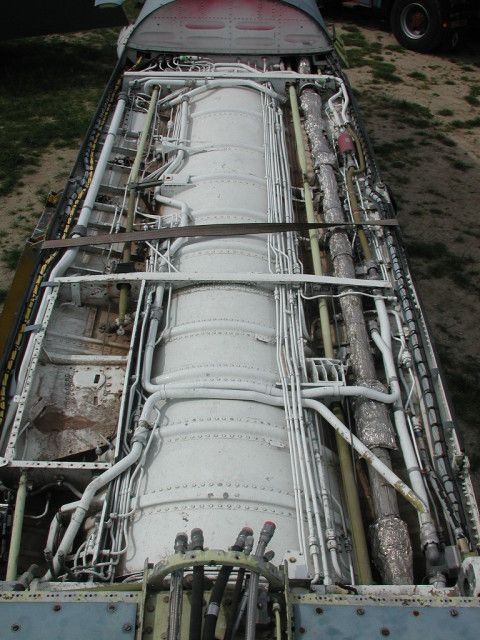
I should also note that it is difficult to see into the wing bay on the actual aircraft, and more so on a model so don't get to carried away.
HTH,
Tom
-
Wow! Thanks Alexey, that is great stuff.
Cheers,
Tom
-
Sorry Charlie, but no. The big problem is no suitable kits, since all those cruises were in early versions with the small nose, and no kit maker has seen fit to do any early Crusaders, even though with only a few extra parts they could do them all. And decal producers show no inclination to do decals for versions for which no kit exists, even though there is a very good conversion available from Muroc Models. We basically get the same stuff over and over and over again: CAG's and MiG killers. I have nothing against either, knew a lot of both, but there were a lot of colorful early Crusaders
VF-111 would not be too hard to cobble together from existing sheets - just leave off the sunburst and put together the NE with black stripes or design and print your own, The red trim on the tail, wingtips and ventrals could be cut from plain red decal, or just masked and painted. VF-24 would be a bit more difficult since they had the checkerboard stripe on the tail, but you could design and print your own red checkerboard and apply it onto a white stripe. Old school modeling, which we are not used to any more, but it could be done. Or maybe Caracal could be convinced to do an early Crusader sheet, or at least a Crusader sheet with some early versions on it. You listening, Kursad? I have LOTS of photos!
Cheers,
Tom
-
Whoops!! I looked in props and missed it somehow. Looks like you already had more than enough clarification on the subject. I still look forward to seeing your model, whenever it gets done. Have a great vacation, Bobo.
Cheers,
Tom
-
Hi Bobo,
If you asked this question elsewhere, I cannot find it, so I will answer it here. The answer is yes, it should be there. It is Corogard and was commonly applied to the leading edges of all flying surfaces in the gull grey over white era (with some exceptions). It is difficult to see in photos because it often appears to be light gull grey carried over to the underside of the leading edge, and the upper side of the leading edge is usually not visible on parked A-1's. Here is a small shot of a 176 Spad (not 409, unfortunately) thatclearly shows it on the wings and vertical stab, and probably on the horizontals as well, though it is difficult to say for sure. Hope it helos, and I look forward to seeing your model.
Cheers,
Tom
-
Great job on both, Darren, though I am, of course, partial to the Crusader. Glad I could help.
Tom
-
PM sent
-
Gents,
I do not think there are any lighting or photographic artifacts in that photo. Keep in mind that manufacturers are given a wide latitude when producing paint to the FS specifications: 10% plus or minus on any parameter. So a batch from a manufacturer might be 10% too light, too dark, too much (or too little) of any primary color, or combination of colors, and still conform to the specification. And a 10% difference on any given parameter is a HUGE difference in the resulting color relative to the standard. So I think what you are seeing in the photo is just a graphic example of how different various batches of the same FS color can be. I certainly noticed this many times during my 8 years in Naval Aviation.
Cheers,
Tom
-
It's not an "antenna fairing" it is a second position light that is neon while the rear one is a conventional filament type bulb. The cover for the filament bulb is red on the left, green on the right, but the cover for the neon bulb is clear. Both bulbs are visible, the neon bulb runs the length of the housing, the filament bulb attaches at the rear. I don't have a great shot of either wing, this is about the best I've got. Next time I get near an A-4 I will photograph it close up.
Cheers,
Tom
-
-
Henka,
OK, that explains things. I own a couple of the CE speed brake sets, but they are in storage somewhere and not at hand, so didn't have their instructions to see where you were getting that term from. I should have realized you hadn't pulled out of.......that place where the sun don't shine. So I apologize for my impatience in the second reply. Although I agree it does not match the photos all that well, I still think that if you really wanted to do a C and just cracked the speed brake a bit, it would be difficult to see the detail discrepancy. But that begs the question of how you are, or were, planning to deal with the major shape differences between the C and E noses . Not, I hope, with the CE C conversion set, which is also not accurate. And the cockpits are slightly different as well, not addressed in the CE set.
As to the speed brake, in general, given enough time, the speed brakes on most parked Crusaders would hit the ground, but how long that took varied wildly from aircraft to aircraft. On some it might be on the ground in 30 minutes, on others, it could take days. Or not happen at all, if the Utility Hydraulic system was really tight. It is interesting to note that while photos of parked USN Crusaders without a sagging speed brake are rare, photos of French F-8 s with one are equally rare. I photographed this aircraft at Hyeres in 2002, 3 years after retirement and was told it had not run since. So the bottom line is you can place the speed brake however you want, from fully up to fully down or anywhere in between.
Cheers,
Tom



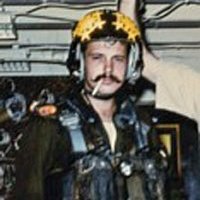
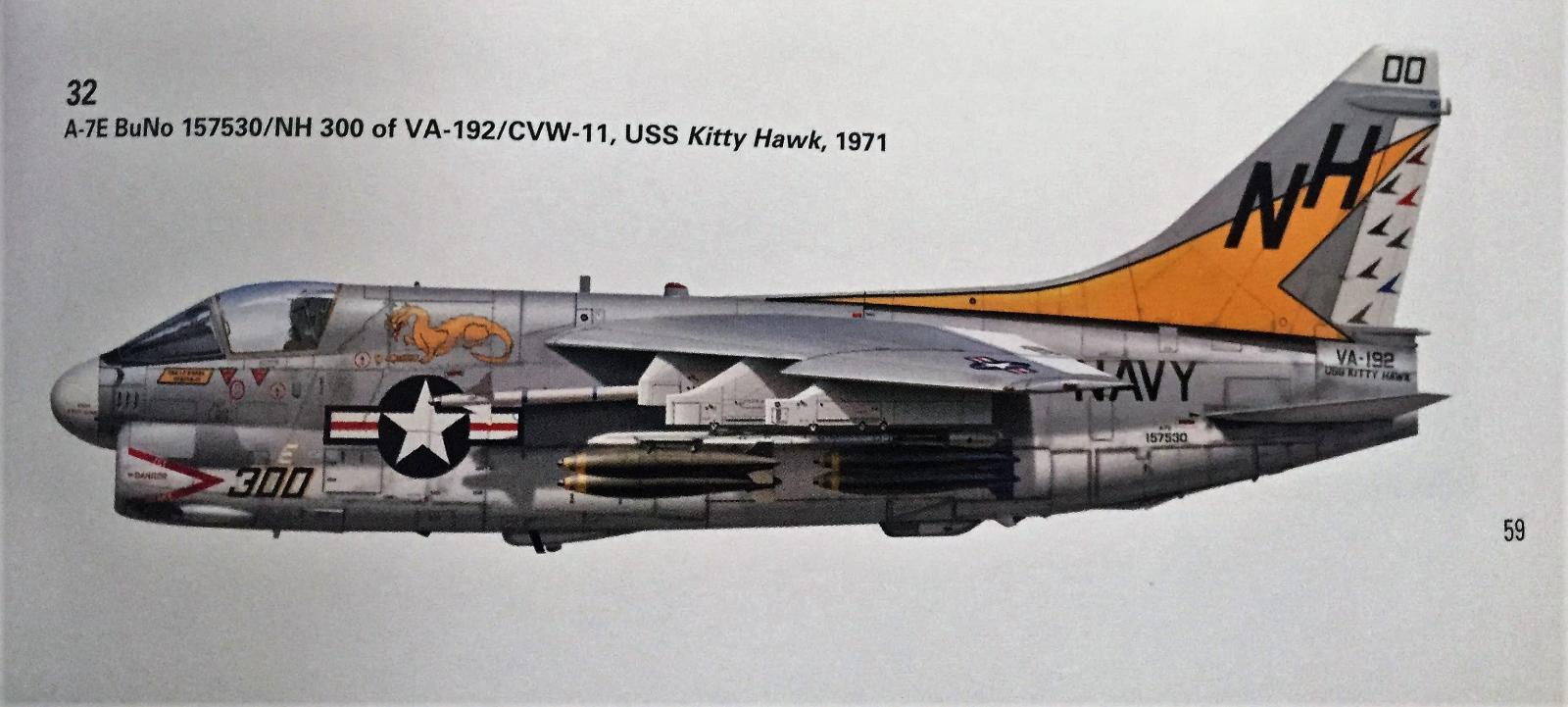

.jpg.748304a1cf93f5c17ff0dd0070585dae.jpg)
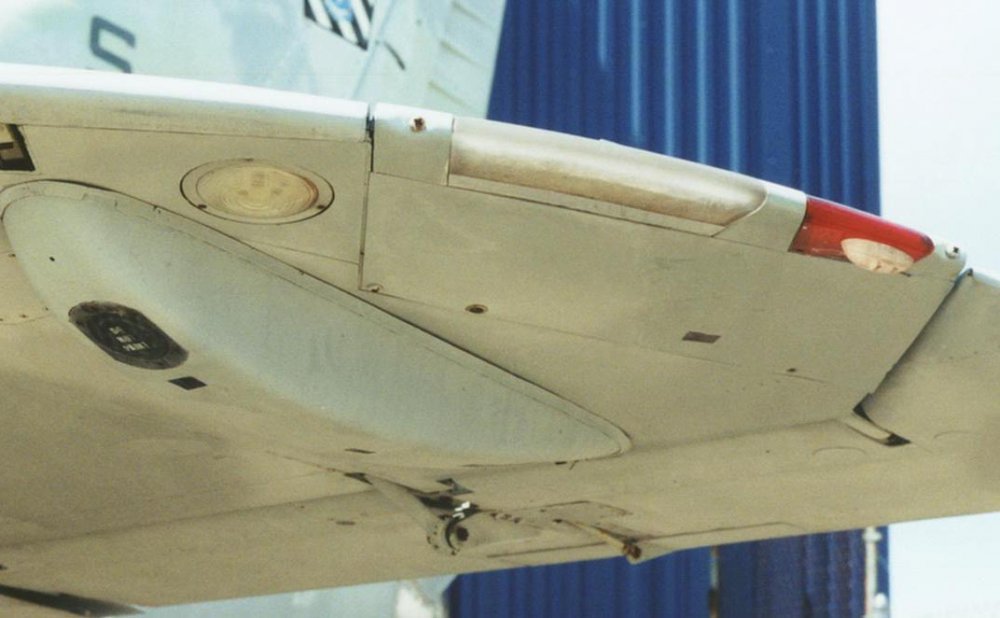

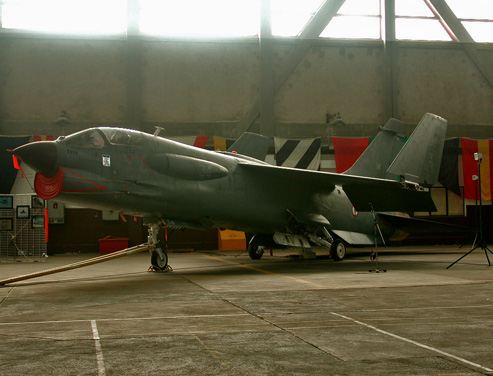
A-1h Skyraider Loadout, Dieter Dengler,
in Props
Posted
In his book, "Escape from Laos", Dengler mentions only bombs but doesn't specify what sort or how many. You will find his recounting of the mission on Skyraider.org here:
http://skyraider.org/skyassn/dengler/dengler.htm
At the bottom of that page is a link to photos supplied by Dengler which ought to give some guidance. I'd go with the mixed load of WWII types toward the bottom.
HTH,
Tom